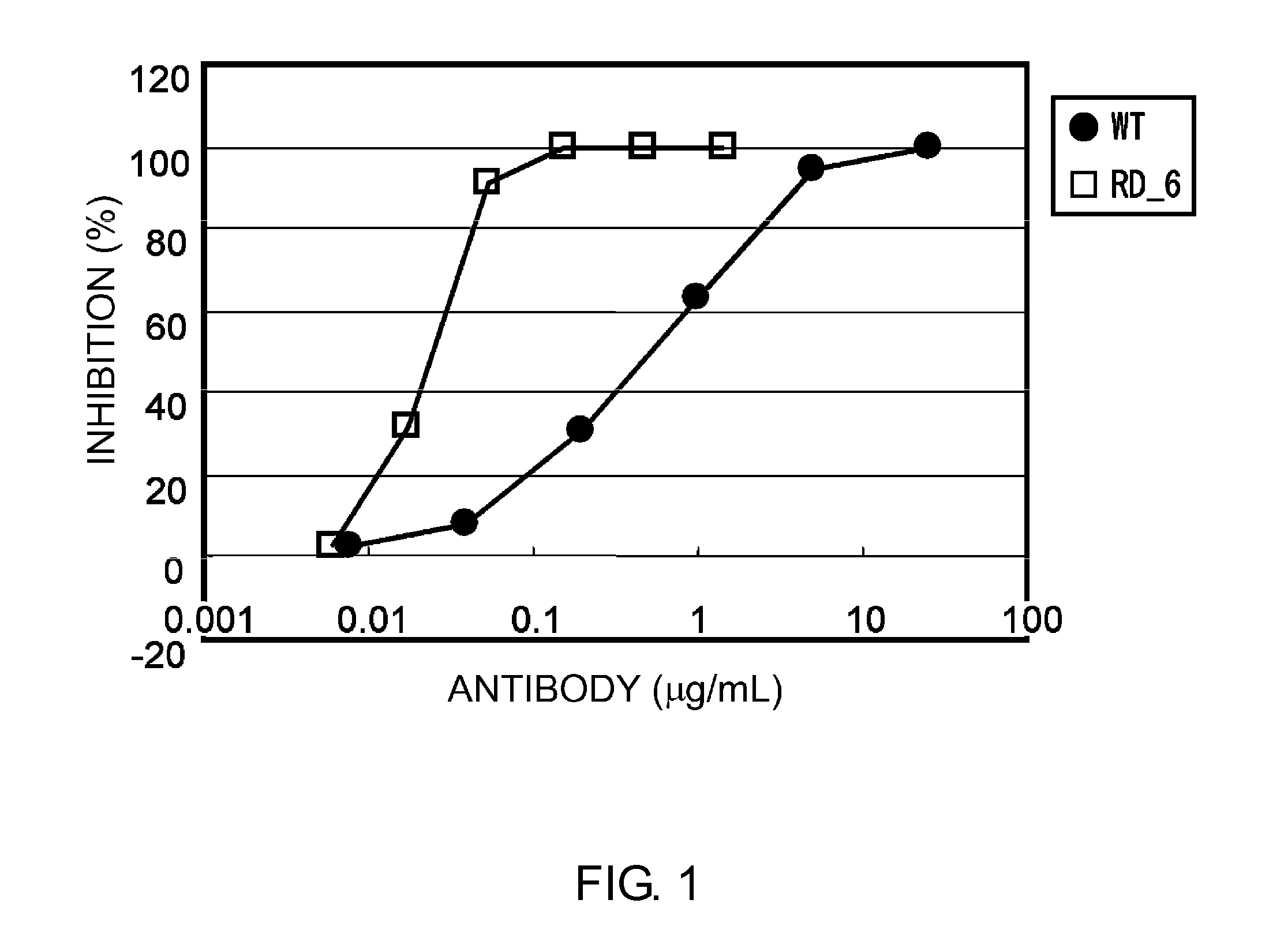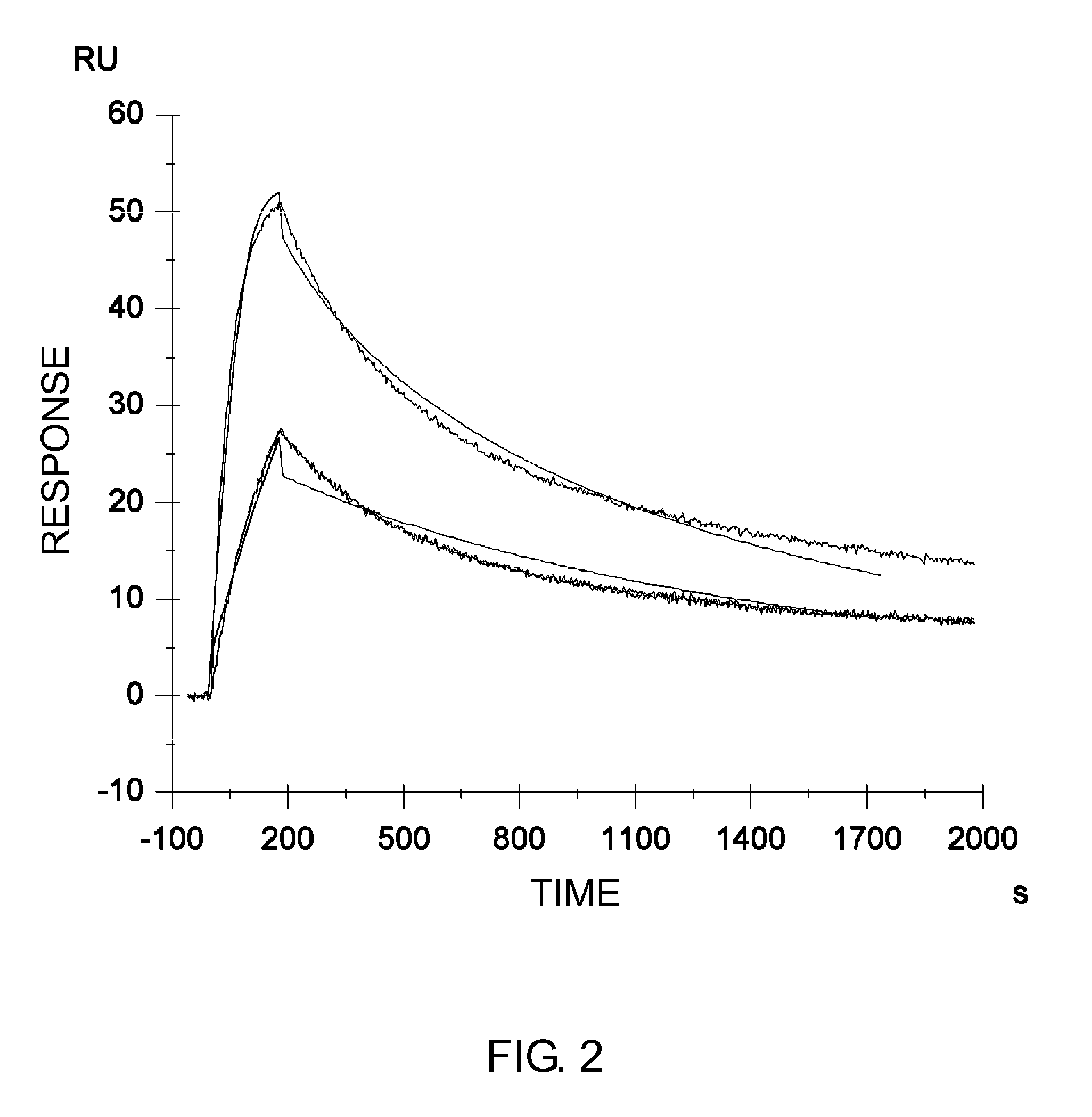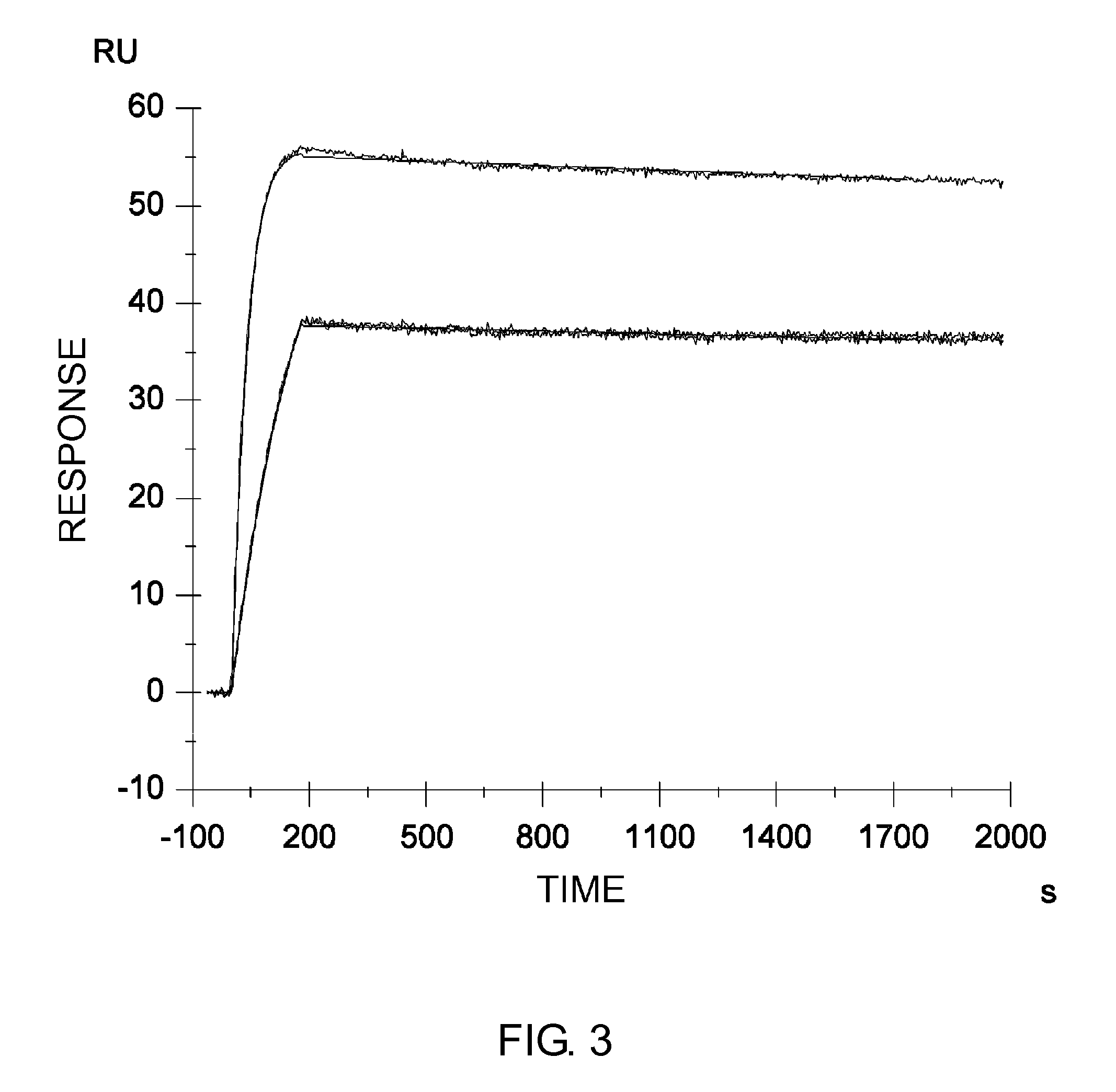Anti-IL-6 Receptor Antibody
a technology of anti-il-6 receptor and anti-il-6, which is applied in the direction of drug compositions, instruments, immunological disorders, etc., can solve the problems of high production cost associated with the administration of extremely large quantities of protein, increased immunogenicity risk, and inability to introduce non-natural sequences into the constant region, etc., to achieve prolonging the therapeutic effect, reducing the frequency of administration, and improving the antigen neutralizing activity and pharmacokinetics
- Summary
- Abstract
- Description
- Claims
- Application Information
AI Technical Summary
Benefits of technology
Problems solved by technology
Method used
Image
Examples
example 1
Improvement of Antigen-Binding Activity Through CDR Alteration Using Affinity Maturation Technology
Preparation of SR344
[0532]A CHO cell line constitutively expressing a sequence of N-terminal 1st to 344th amino acids of soluble human IL-6R (hereinafter SR344) reported in J. Biochem. (1990) 108, 673-676 (Yamasaki et al., Science (1988) 241, 825-828 (GenBank #X12830)) was prepared.
[0533]SR344 was purified from the culture supernatant of SR344-expressing CHO cells using three types of column chromatography: Blue Sepharose 6 FF column chromatography, affinity chromatography with an SR344-specific antibody-immobilized column, and gel filtration column chromatography.
[0534]The culture supernatant was directly loaded onto a Blue Sepharose 6 FF column (GE Healthcare Bio-Sciences) equilibrated with 20 mM Tris-HCl buffer (pH 8.0), and the non-adsorbed fraction was thoroughly washed off using the same buffer. Then, the column was washed with the same buffer containing 300 mM KCl. The adsorbed ...
example 2
Improvement of Antigen Binding Activity Through Various Combinations of CDR Alterations
[0552]Mutations associated with strong activity or high affinity were combined to create antibodies with stronger activity and higher affinity.
Production, Expression, and Purification of Altered Antibodies
[0553]Amino acids at selected sites were altered to produce altered antibodies. Specifically, mutations were introduced into the prepared H(WT) variable region (H(WT), SEQ ID NO: 107) and L(WT) variable region (L(WT), SEQ ID NO: 108) using the QuikChange Site-Directed Mutagenesis Kit (Stratagene) by the method described in the attached instruction manual. After it was confirmed that the antibody H chain gene fragment inserted into a plasmid was the humanized antibody variable region gene sequence of interest, the plasmid was digested with XhoI and NotI. A plasmid containing the antibody L chain gene fragment as an insert was digested with EcoRI. Then, the reaction mixtures were subjected to elect...
example 3
Generation of H53 / L28 with Improved Pharmacokinetics and Reduced Immunogenicity Risk Through Alterations of CDR and Framework
[0562]The antibody obtained by humanizing a mouse PM-1 antibody (hereinafter referred to as wild type or WT; the WT H and L chains are referred to as H(WT) and L(WT), respectively) as described in Cancer Res. 1993 Feb. 15; 53(4):851-6, was altered to improve the pharmacokinetics, reduce the immunogenicity risk, and increase the stability. The alterations are described below. For the purpose of improving the pharmacokinetics, the H and L chain variable region sequences of WT were altered to lower the isoelectric point.
Creation of a Three-Dimensional Structure Model for the Humanized PM-1 Antibody
[0563]First, to identify amino acid residues exposed on the surface of the variable regions of the humanized PM-1 antibody (H(WT) / L(WT)), a model for the Fv domain of the antibody obtained by humanizing a mouse PM-1 antibody was created by homology modeling using the MO...
PUM
| Property | Measurement | Unit |
|---|---|---|
| concentration | aaaaa | aaaaa |
| pH | aaaaa | aaaaa |
| concentration | aaaaa | aaaaa |
Abstract
Description
Claims
Application Information
 Login to View More
Login to View More - R&D
- Intellectual Property
- Life Sciences
- Materials
- Tech Scout
- Unparalleled Data Quality
- Higher Quality Content
- 60% Fewer Hallucinations
Browse by: Latest US Patents, China's latest patents, Technical Efficacy Thesaurus, Application Domain, Technology Topic, Popular Technical Reports.
© 2025 PatSnap. All rights reserved.Legal|Privacy policy|Modern Slavery Act Transparency Statement|Sitemap|About US| Contact US: help@patsnap.com



